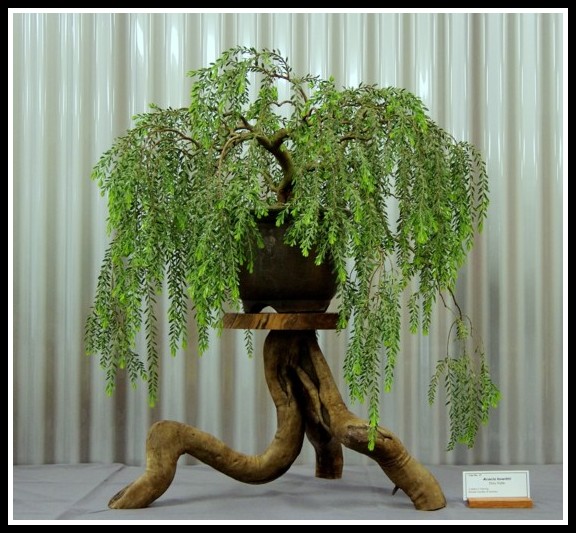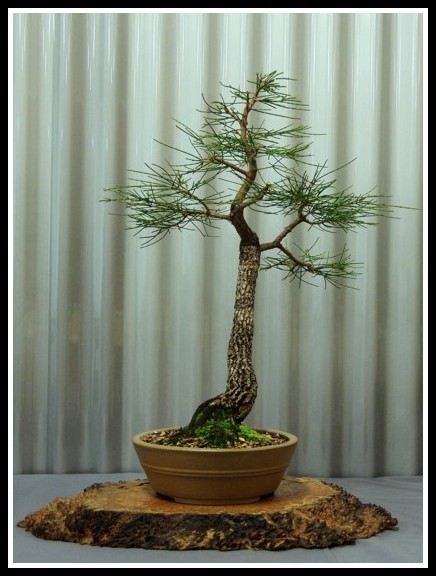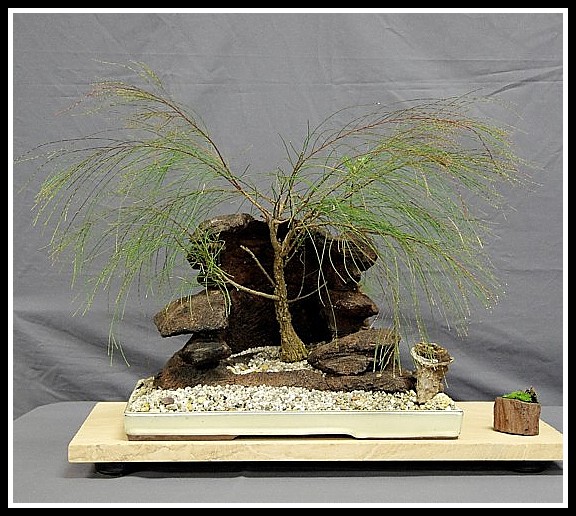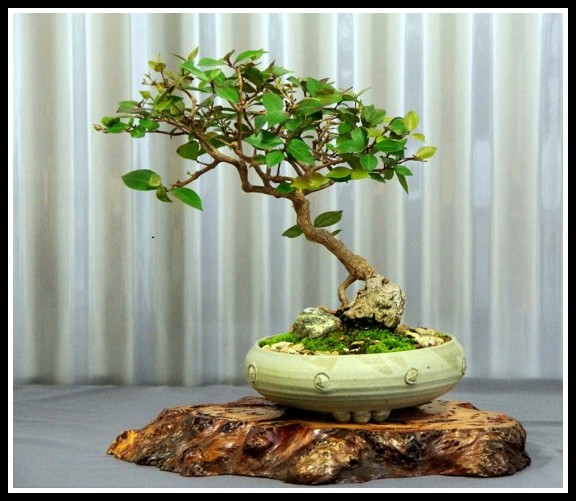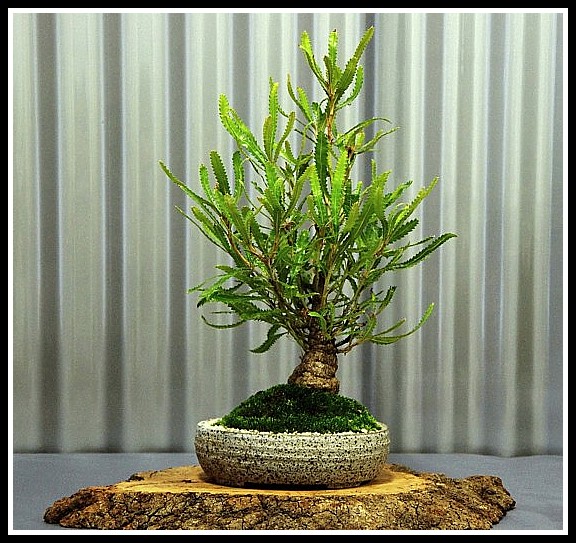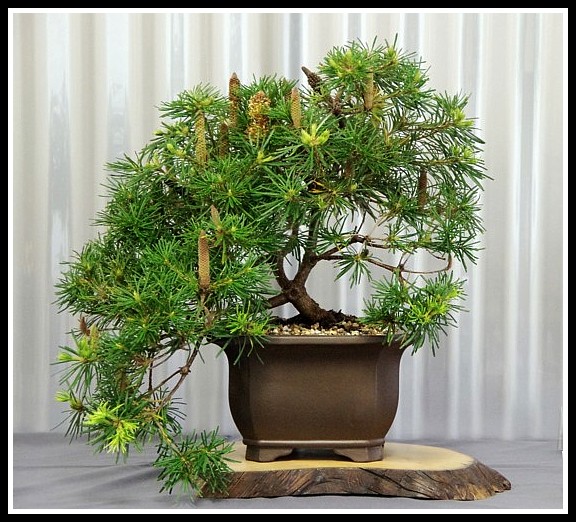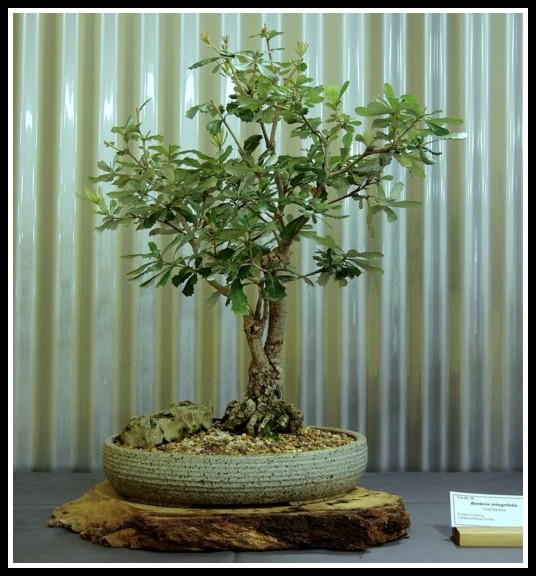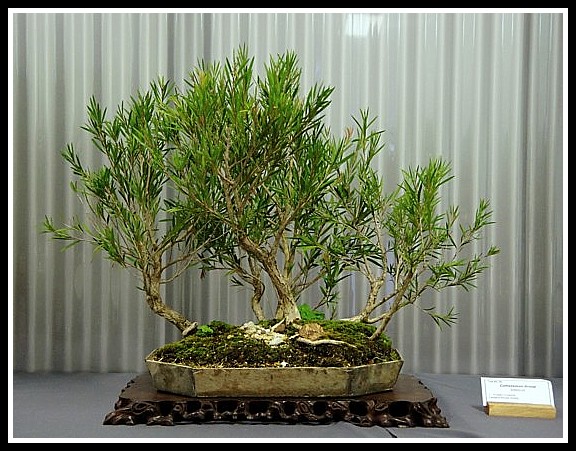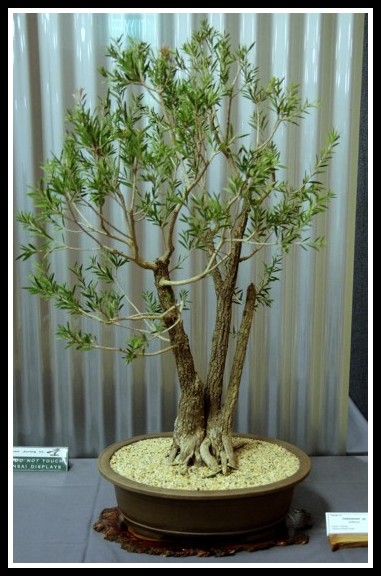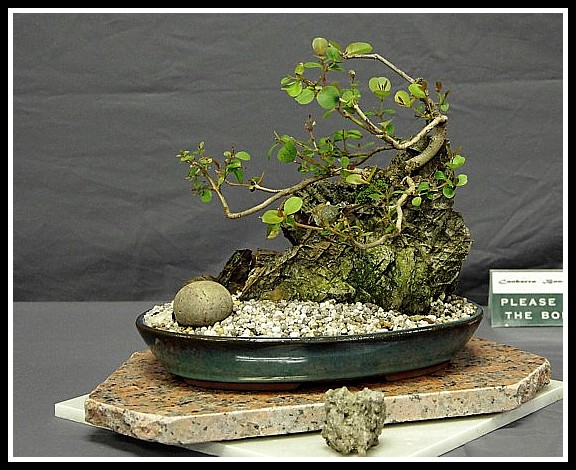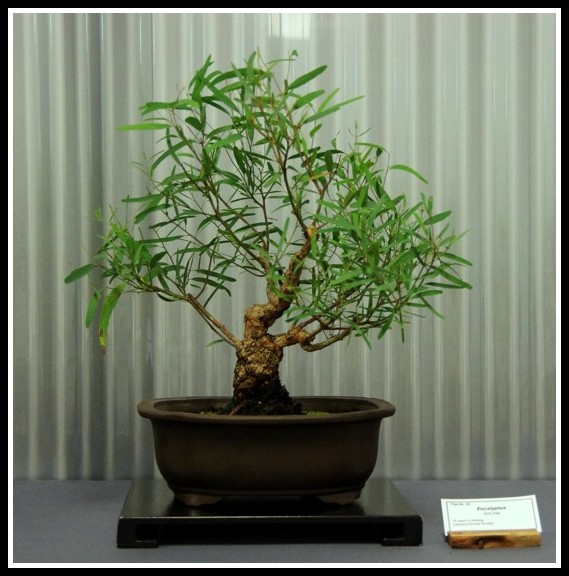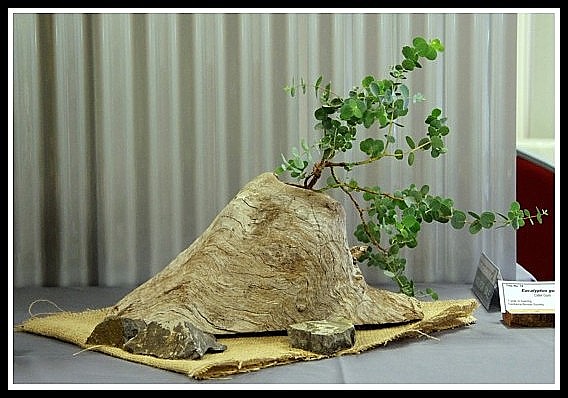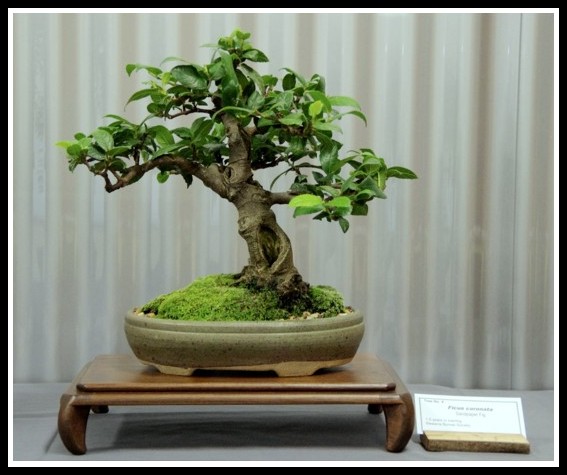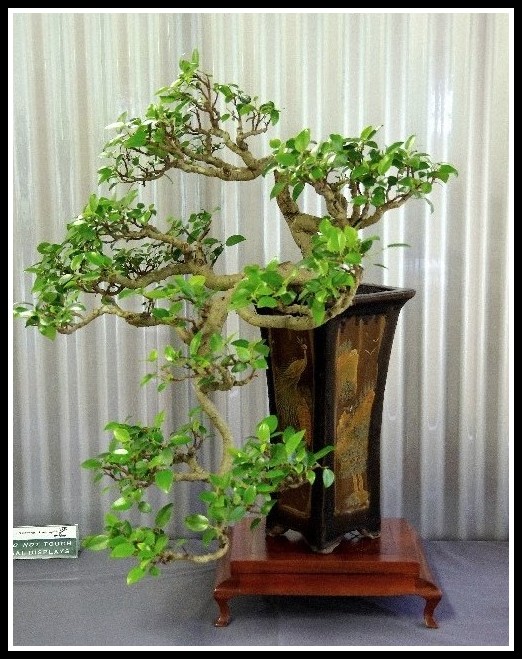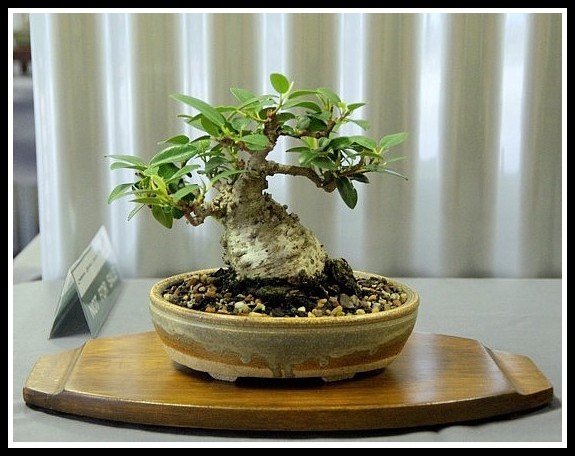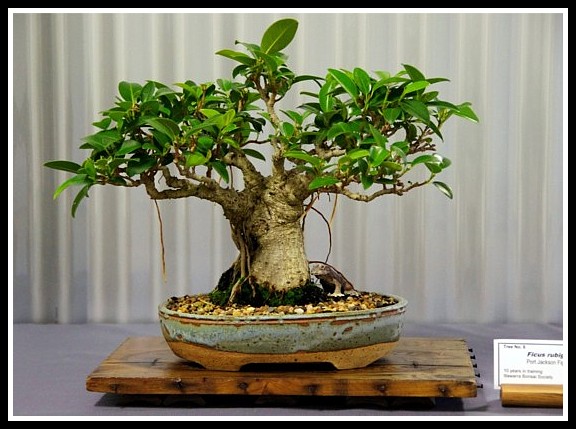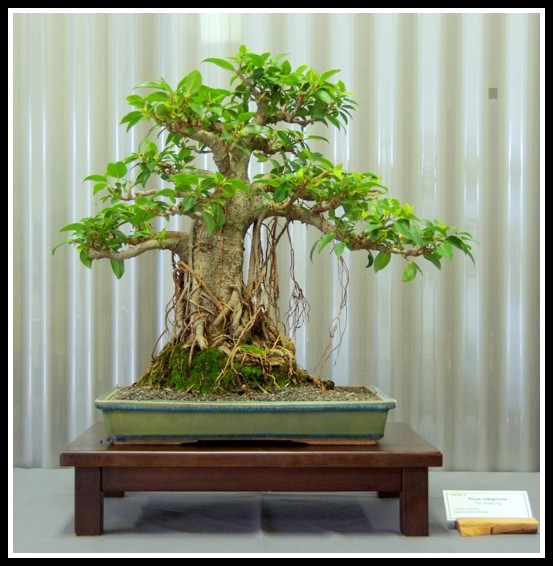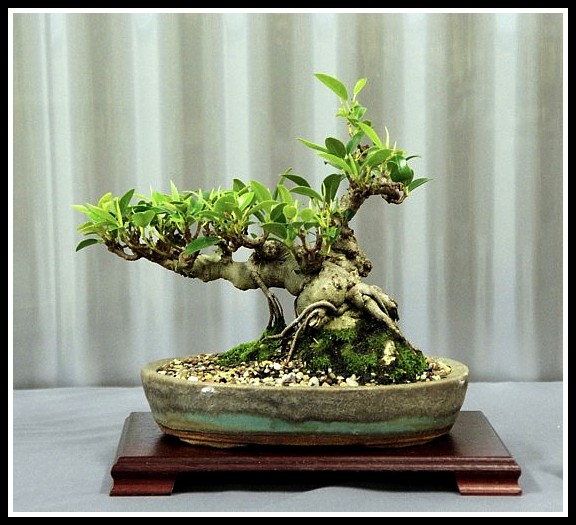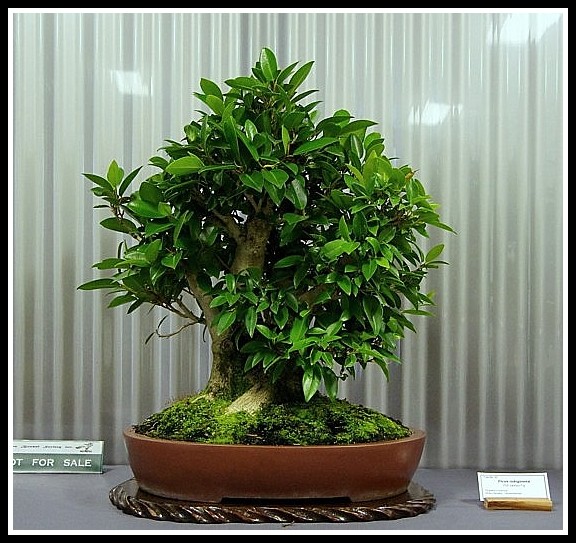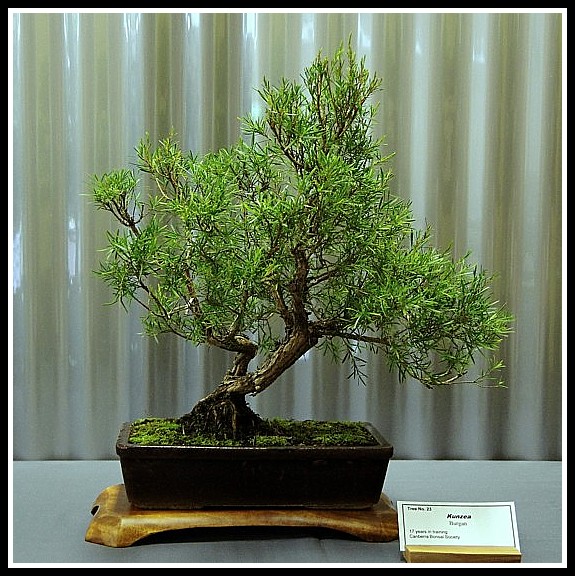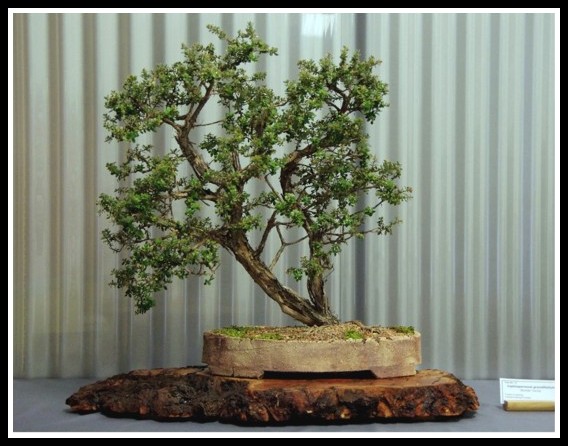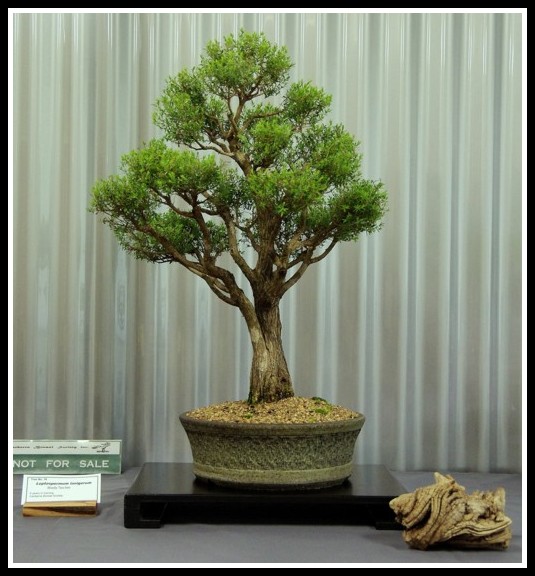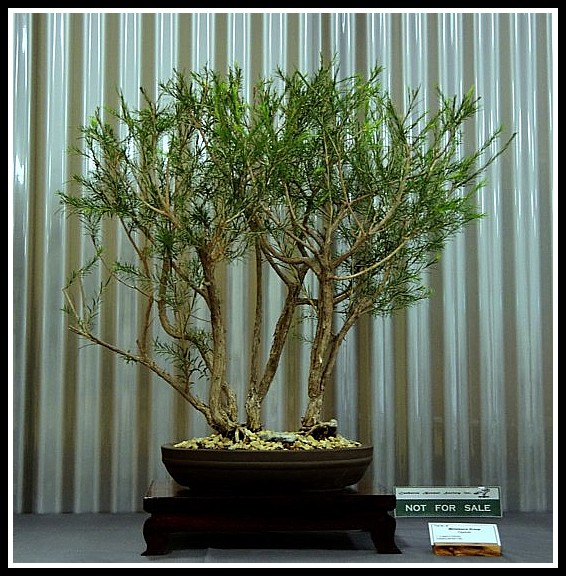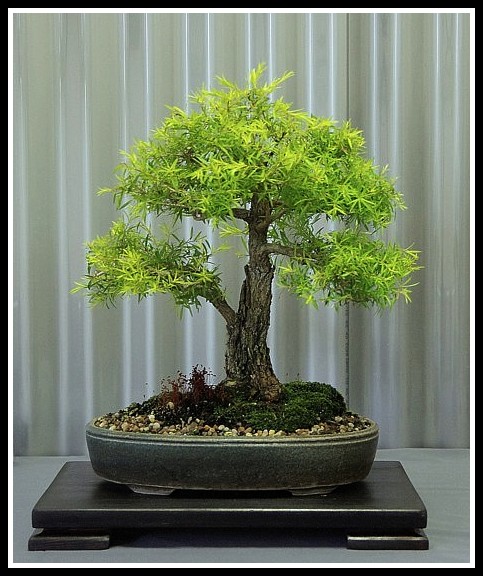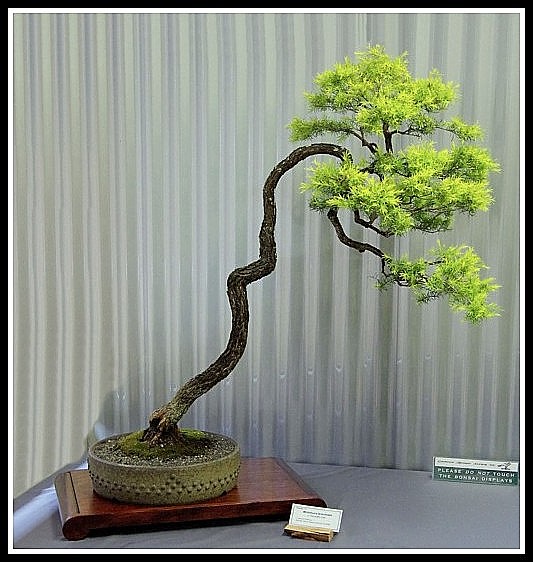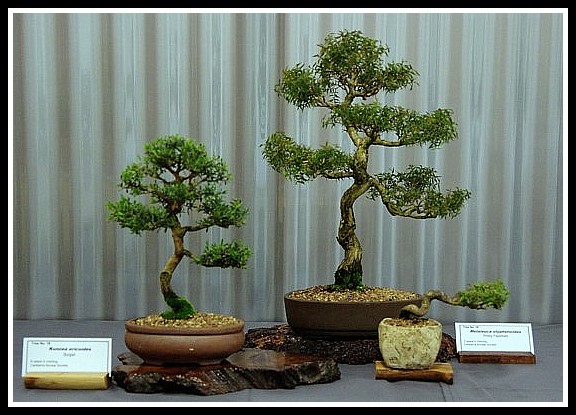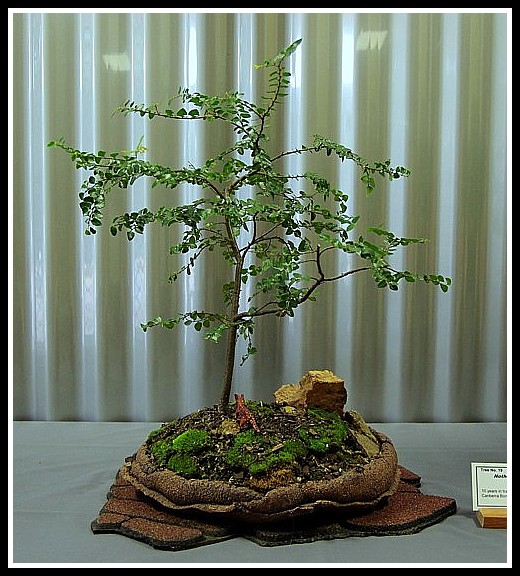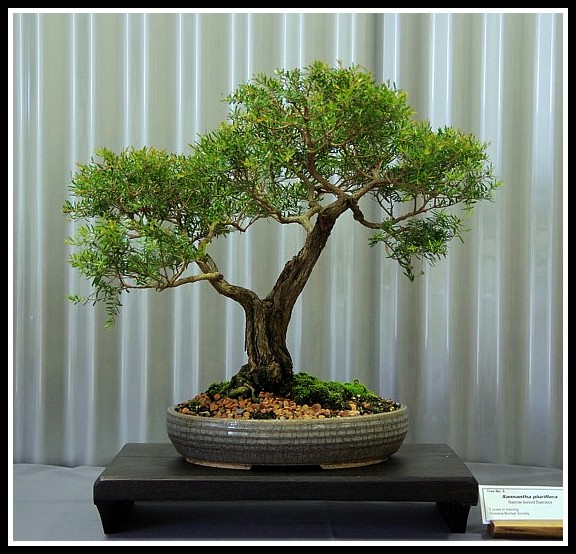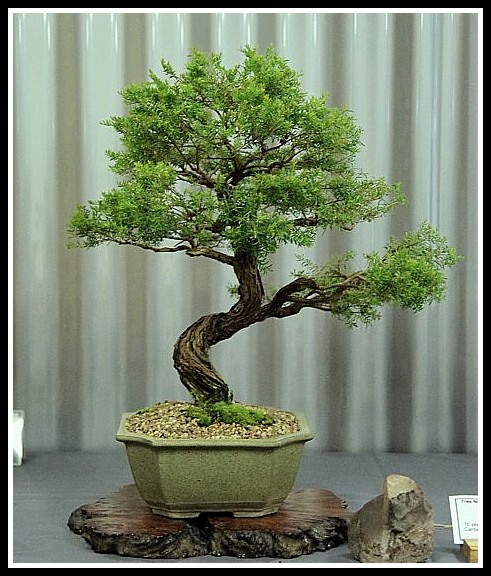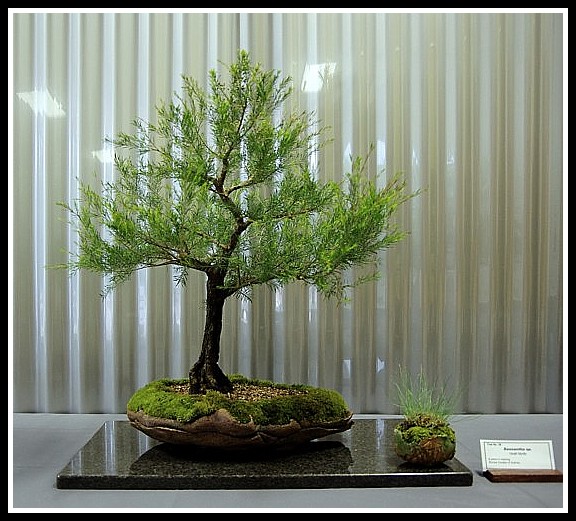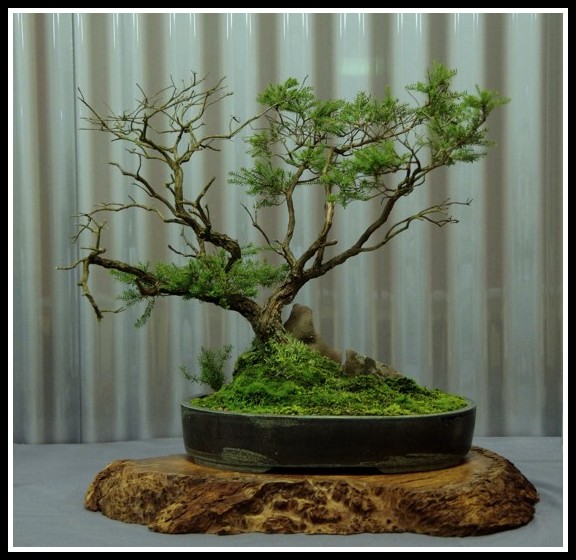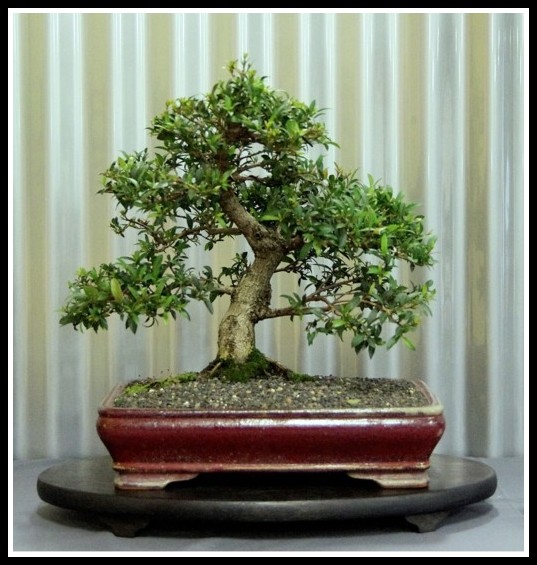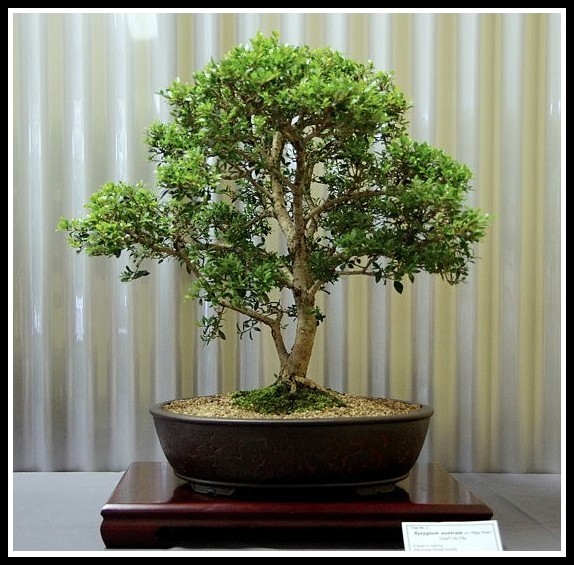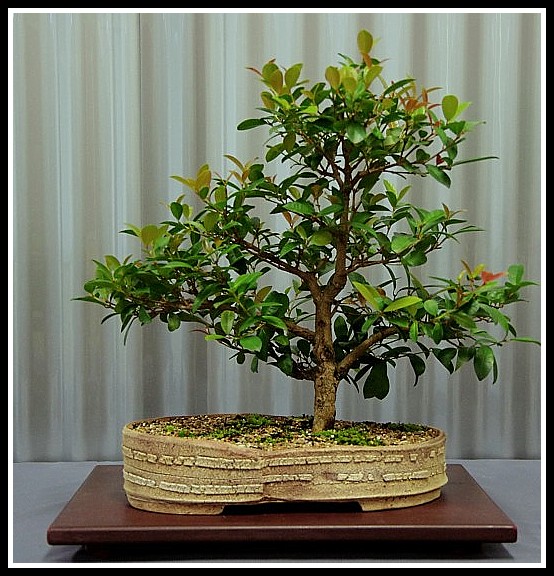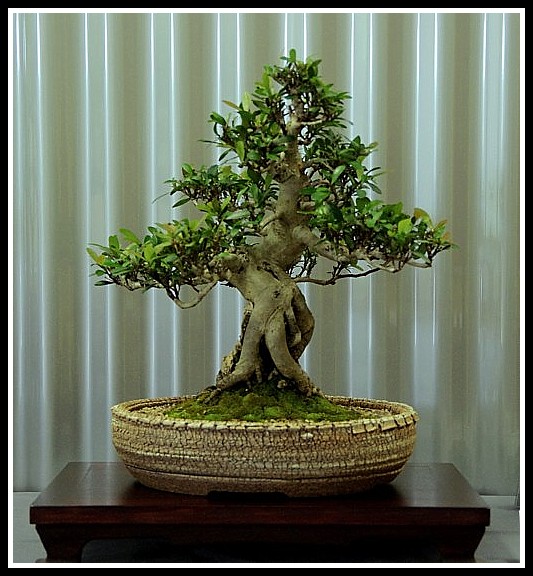Backhousia myrtifolia
Grey myrtle
6 years in training
Canberra Bonsai Society
The grey myrtle, or ironwood, is a tall shrub or small tree, found near water-courses of the coastal regions of southern NSW through to central Queensland and grows to a height of 5-10 m. It has not been widely used in bonsai, but as its many virtues become known, its use is extending. This myrtle species responds very well to pruning and if heavily pruned it will shoot from very old wood. If regularly tip pruned during the growing season, it ramifies strongly and also reduces in leaf size by 70-80%. Young leaves can be a rich, velvety, burgundy red, later becoming shiny dark green. The grey myrtle has small white to cream flower heads. As yet my tree has not flowered but I expect they would be the usual cream colour. The species can be adapted to most bonsai styles. This tree was a starter plant obtained from Cambewarra Bonsai Nursery in 2005 and I’m using clip and grow techniques to develop it in a root over rock style. The tree is potted into a shallow, round, Pat Kennedy, Mirkwood Forest Pottery bonsai pot whose grey-green glaze complements the tree.
